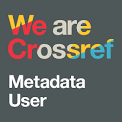Efforts to Improve the Quality of Movement Activities of Physical Education, Sports and Health, During the Covid-19 Pandemic
DOI:
https://doi.org/10.51574/ijrer.v2i1.315Keywords:
Covid Pandemic, Motion Activity, Online learning, Learning TechnologiesAbstract
The COVID-19 pandemic has changed our lifestyles. One of them is the world of education. The learning process is hampered, but new innovations emerge in the world of education that indirectly direct education in a more advanced direction by incorporating the world of information and communication technology into education through technological pedagogical content knowledge. Learning currently uses more online learning that utilizes technology, especially internet networks, and reduces the movement activities of students while learning. Physical Education, Sports, and Health are the most challenged by network learning due to the emphasis on movement activities, whereas network learning is more like having students sit in front of the electronic devices used. This also causes a decrease in the value of psychomotor movements. Even if learning is carried out face-to-face, several obstacles are encountered, especially the limited time for face-to-face meetings at school, forcing educators to condense the material to be delivered. In practice, learning with very limited time in the field so as to get students' psychomotor scores for student worksheets requires students to make video recordings in accordance with the material being taught. The main objective of this subject for elementary school age is to increase students' movement activities.
References
Adam, N. L., Alzahri, F. B., Cik Soh, S., Abu Bakar, N., & Mohamad Kamal, N. A. (2017). Self-regulated learning and online learning: a systematic review. In International Visual Informatics Conference (pp. 143-154). Springer, Cham. https://doi.org/10.1007/978-3-319-70010-6_14
Adedoyin, O. B., & Soykan, E. (2020). Covid-19 pandemic and online learning: the challenges and opportunities. Interactive learning environments, 1-13. https://doi.org/10.1080/10494820.2020.1813180
Aristovnik, A., Keržič, D., Ravšelj, D., Tomaževič, N., & Umek, L. (2020). Impacts of the COVID-19 pandemic on life of higher education students: A global perspective. Sustainability, 12(20), 8438. https://doi.org/10.3390/su12208438
Budi, D. R., Kusuma, M. N. H., Syafei, M., & Stephani, M. R. (2019). The Analysis of Fundamental Movement Skill in Primary School Student in Mountain Range. In 3rd International Conference on Sport Science, Health, and Physical Education (ICSSHPE 2018) (pp. 195-198). Atlantis Press.
Cachón-Zagalaz, J., Sánchez-Zafra, M., Sanabrias-Moreno, D., González-Valero, G., Lara-Sánchez, A. J., & Zagalaz-Sánchez, M. L. (2020). Systematic review of the literature about the effects of the COVID-19 pandemic on the lives of school children. Frontiers in Psychology, 11, 569348.
Centeio, E., Mercier, K., Garn, A., Erwin, H., Marttinen, R., & Foley, J. (2021). The success and struggles of physical education teachers while teaching online during the COVID-19 pandemic. Journal of Teaching in Physical Education, 40(4), 667-673.
Chow, J. Y., Davids, K., Button, C., Shuttleworth, R., Renshaw, I., & Araújo, D. (2007). The role of nonlinear pedagogy in physical education. Review of Educational Research, 77(3), 251-278. https://doi.org/10.3102/003465430305615
Donnelly, F. C., Mueller, S. S., & Gallahue, D. L. (2016). Developmental physical education for all children: theory into practice. Human Kinetics.
Dwivedi, Y. K., Hughes, D. L., Coombs, C., Constantiou, I., Duan, Y., Edwards, J. S., ... & Upadhyay, N. (2020). Impact of COVID-19 pandemic on information management research and practice: Transforming education, work and life. International journal of information management, 55, 102211.
Edelson, D. C. (2002). Design research: What we learn when we engage in design. The Journal of the Learning sciences, 11(1), 105-121.
Garagiola, E. R., Lam, Q., Wachsmuth, L. S., Tan, T. Y., Ghali, S., Asafo, S., & Swarna, M. (2022). Adolescent Resilience during the COVID-19 Pandemic: A Review of the Impact of the Pandemic on Developmental Milestones. Behavioral Sciences, 12(7), 220. https://doi.org/10.3390/bs12070220
Graham, C. R., & Dziuban, C. (2008). Blended learning environments. In Handbook of research on educational communications and technology (pp. 269-276). Routledge.
Harris, A., & Jones, M. (2020). COVID 19–school leadership in disruptive times. School Leadership & Management, 40(4), 243-247.
Hilton III, J., Bliss, T. J., Robinson, T. J., & Wiley, D. A. (2013). An OER COUP: College teacher and student perceptions of open educational resources. https://doi.org/10.5334/2013-04
Huang, R., Tlili, A., Chang, T. W., Zhang, X., Nascimbeni, F., & Burgos, D. (2020). Disrupted classes, undisrupted learning during COVID-19 outbreak in China: application of open educational practices and resources. Smart Learning Environments, 7(1), 1-15. https://doi.org/10.1186/s40561-020-00125-8
Joshi, A., Vinay, M., & Bhaskar, P. (2020). Impact of coronavirus pandemic on the Indian education sector: perspectives of teachers on online teaching and assessments. Interactive Technology and Smart Education. https://doi.org/10.1108/ITSE-06-2020-0087
Jung, J., Horta, H., & Postiglione, G. A. (2021). Living in uncertainty: The COVID-19 pandemic and higher education in Hong Kong. Studies in Higher Education, 46(1), 107-120.
Kelly, L. E., Kelly, L., & Melograno, V. (2004). Developing the physical education curriculum: An achievement-based approach. Human kinetics.
Khan, S., Raza Rabbani, M., Thalassinos, E. I., & Atif, M. (2020). Corona virus pandemic paving ways to next generation of learning and teaching: futuristic cloud based educational model. Available at SSRN 3669832.
Konukman, F., Filiz, B., & Ünlü, H. (2022). Teachers’ perceptions of teaching physical education using online learning during the COVID-19: A quantitative study in Turkey. Plos one, 17(6), e0269377.
Li, J., Yang, Z., Qiu, H., Wang, Y., Jian, L., Ji, J., & Li, K. (2020). Anxiety and depression among general population in China at the peak of the COVID‐19 epidemic. World Psychiatry, 19(2), 249. https://doi.org/10.1002/wps.20758
Leo, S., Alsharari, N. M., Abbas, J., & Alshurideh, M. T. (2021). From offline to online learning: A qualitative study of challenges and opportunities as a response to the COVID-19 pandemic in the UAE higher education context. The Effect of Coronavirus Disease (COVID-19) on Business Intelligence, 203-217.
López-Pastor, V. M., Kirk, D., Lorente-Catalán, E., MacPhail, A., & Macdonald, D. (2013). Alternative assessment in physical education: a review of international literature. Sport, Education and Society, 18(1), 57-76. https://doi.org/10.1080/13573322.2012.713860
Muzaini, M., Rahayuningsih, S., Nasrun, N., & Hasbi, M. (2021). Creativity in synchronous and asynchronous learning during the covid-19 pandemic: a case study. AKSIOMA: Jurnal Program Studi Pendidikan Matematika, 10(3), 1722-1735.
Nurulfa, R., Motto, C. A., Dlis, F., Tangkudung, J., Lubis, J., & Junaidi, J. (2021). Physical education survey during the COVID-19 pandemic in Eastern Indonesia. International Journal of Human Movement and Sports Sciences, 9(4), 668-675.
Özdin, S., & Bayrak Özdin, Ş. (2020). Levels and predictors of anxiety, depression and health anxiety during COVID-19 pandemic in Turkish society: The importance of gender. International Journal of Social Psychiatry, 66(5), 504-511. https://doi.org/10.1177/0020764020927051
Penney, D., & Chandler, T. (2000). Physical education: What future (s)?. Sport, education and society, 5(1), 71-87. https://doi.org/10.1080/135733200114442
Prasetyo, Y., Sir, I., & Amir, A. (2022). Face-To-Face Learning Methods Are Limited in Overcoming Students' Learning Difficulties During The Pandemic Covid-19. ETDC: Indonesian Journal of Research and Educational Review, 1(3), 286-296.
Renshaw, I., Chow, J. Y., Davids, K., & Hammond, J. (2010). A constraints-led perspective to understanding skill acquisition and game play: a basis for integration of motor learning theory and physical education praxis?. Physical Education and Sport Pedagogy, 15(2), 117-137. https://doi.org/10.1080/17408980902791586
Santyasa, I. W., Agustini, K., & Pratiwi, N. W. E. (2021). Project Based E-Learning and Academic Procrastination of Students in Learning Chemistry. International Journal of Instruction, 14(3), 909-928.
Sari, L. S., Sulistiono, A. A., & Winingsih, L. H. (2020). Effect of psychomotor development on physical health, mental health and student achievement. International Journal of Educational Policy Research and Review.
Yoda, I. K., Wibowo, I. A., Rusiawati, R. T. H. D., Kusuma, K. C. A., & Tisna, G. D. (2021). Analysis of Needs for the Development of Physical Education Learning Model in Elementary School Based on Traditional Game. In 4th International Conference on Innovative Research Across Disciplines (ICIRAD 2021) (pp. 63-68). Atlantis Press.









1.png)













